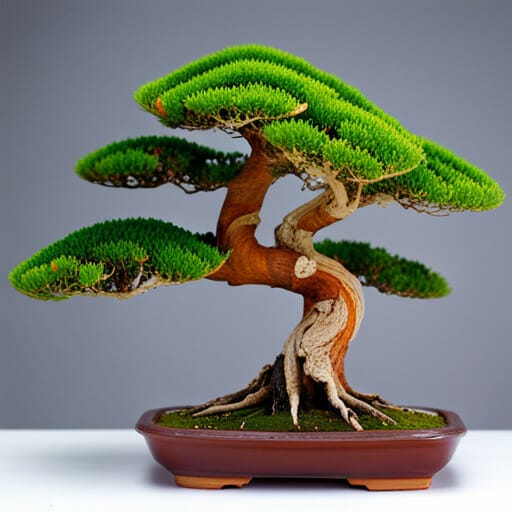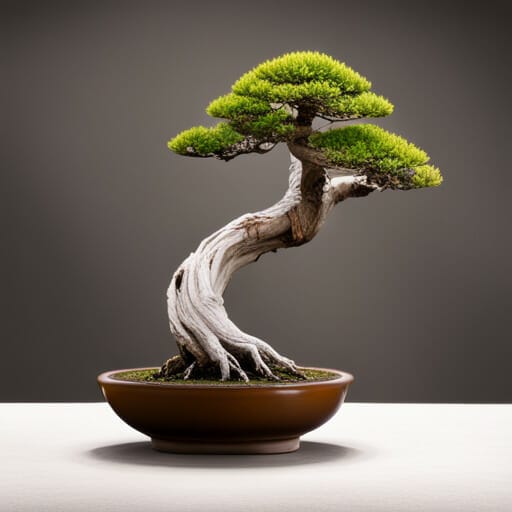In the world of horticulture, few treasures rival the exquisite rarity of bonsai trees. These miniature wonders captivate with their unique features and hold a special place in the hearts of enthusiasts.
The scarcity of bonsai can be attributed to various factors, such as the limited availability of certain species and their exceptionally small size. Take, for example, the Buddhas hand bonsai, with its delicate, finger-like leaves, or the beech-leaf prickly ash bonsai, known for its vibrant autumn foliage. These rare species, along with others like the olive tree and bougainvillea, possess distinct characteristics that make them highly sought after.
Moreover, the age and size of a bonsai tree contribute significantly to its rarity. Older bonsai trees are not only more valuable but also more challenging to maintain, requiring a high level of skill and patience. Additionally, the unique styling of bonsai, such as the literati style or hollow style, adds to their rarity and allure.
Beyond their intrinsic qualities, the historical and cultural significance of certain bonsai trees further enhances their rarity. Owning a bonsai once cherished by an important figure, like the Emperor of Japan, elevates its value and prestige.
In this article, we will delve into the captivating world of bonsai and unveil the unique treasures that showcase the artistry and dedication of their cultivators. By exploring the factors that contribute to their rarity and highlighting specific species, we aim to provide insight into the mesmerizing realm of these exquisite bonsai treasures.
Contents
- 1 Quick Points
- 2 What makes them rare?
- 3 Rare bonsai species
- 4 Valuable and difficult to maintain
- 5 Frequently Asked Questions
- 5.1 Are there any specific factors that contribute to the rarity of bonsai trees?
- 5.2 Can you provide examples of rare bonsai tree species?
- 5.3 What makes certain bonsai trees valuable and difficult to maintain?
- 5.4 Are there any well-known and very old bonsai trees in Japan?
- 5.5 Can you explain how size plays a role in determining the rarity of bonsai trees?
Quick Points
- Rarity in bonsai can manifest in various forms including scarcity of certain species and extremely small size.
- Factors that determine rarity in bonsai include species, age, size, style, and historical/cultural significance.
- Rare bonsai species include Buddhas hand, beech-leaf prickly ash, olive tree, and bougainvillea.
– Older bonsai trees are more valuable and difficult to maintain, with some well-known very old bonsai trees in Japan being the 1000-year-old Ezo spruce and the 1000-year-old Japanese shimpaku juniper.
Immerse Yourself Into The Ancient World Of Tanuki Technique
What makes them rare?

Factors such as species, age, size, style, and historical/cultural significance contribute to the rarity of bonsai trees. Rarity in bonsai can be characterized by the scarcity of certain species and their extremely small size. Some rare bonsai species include:
- The Buddhas hand bonsai, created from the unique finger-like shaped fruit of the citrus medica var. sarcodactylus.
- The beech-leaf prickly ash bonsai, known for its small, round leaves and spicy aroma when crushed.
- The olive tree bonsai, featuring a gnarled trunk, twisted branches, and glossy green leaves.
- The bougainvillea bonsai, renowned for its vibrant, colorful bracts and requiring warm and sunny conditions.
Additionally, rarity can also be determined by the age of the bonsai, with older trees being more valuable and challenging to maintain. Furthermore, the style and historical/cultural significance of a bonsai can also contribute to its rarity, such as bonsai trees owned by important figures like the Emperor of Japan.
Rare bonsai species

Buddhas hand, beech-leaf prickly ash, olive tree, and bougainvillea are among the rare species of bonsai trees.
Buddhas hand bonsai is created from the distinct finger-like shaped fruit of the citrus medica var. sarcodactylus.
The beech-leaf prickly ash bonsai is known for its small, round leaves and releases a spicy aroma when crushed.
The olive tree bonsai exhibits a gnarled trunk, twisted branches, and glossy green leaves.
Bougainvillea bonsai is recognized for its vibrant and colorful bracts, requiring warm and sunny conditions for optimal growth.
These rare bonsai species possess unique characteristics that contribute to their scarcity and desirability. They offer a captivating and exquisite beauty that adds diversity to the world of bonsai, making them highly sought after by enthusiasts and collectors alike.
Valuable and difficult to maintain

Valued for their age and intricacy, older bonsai trees require meticulous care and maintenance, with some experts estimating that it can take up to 10 years to fully establish a healthy root system. These ancient specimens, often considered the crown jewels of bonsai collections, demand a high level of skill and patience from their caretakers. The delicate balance of watering, pruning, and fertilizing must be carefully managed to ensure the tree’s health and longevity.
To illustrate the dedication required to maintain these valuable bonsai trees, consider the following table:
| Care Requirement | Description |
|---|---|
| Watering | Bonsai trees have specific watering needs, with proper drainage and regular monitoring of soil moisture levels. |
| Pruning | Regular pruning helps maintain the desired shape and size of the tree, as well as promoting healthy growth. |
| Fertilizing | Bonsai trees require regular fertilization to provide essential nutrients for growth and overall health. |
| Sunlight Exposure | Proper placement and exposure to sunlight is crucial for the bonsai tree’s survival and healthy development. |
By understanding the unique needs of older bonsai trees and providing the necessary care, enthusiasts can ensure the longevity and beauty of these exquisite rarities.
Frequently Asked Questions
Are there any specific factors that contribute to the rarity of bonsai trees?
Factors that contribute to the rarity of bonsai trees include species, age, size, style, and historical/cultural significance. Rare bonsai species, such as Buddhas hand and beech-leaf prickly ash, as well as unique styles like literati and hollow, can further enhance their rarity.
Can you provide examples of rare bonsai tree species?
Rare bonsai tree species include Buddhas hand, beech-leaf prickly ash, olive tree, and bougainvillea. Buddhas hand bonsai is made from the unique fruit of the citrus medica var. sarcodactylus, while beech-leaf prickly ash bonsai is known for its small, round leaves and spicy aroma. Olive tree bonsai has a gnarled trunk and twisted branches, while bougainvillea bonsai is known for its vibrant, colorful bracts.
What makes certain bonsai trees valuable and difficult to maintain?
Older bonsai trees are more valuable and difficult to maintain. Well-known very old bonsai trees in Japan include the 1000-year-old Ezo spruce and the 1000-year-old Japanese shimpaku juniper.
Are there any well-known and very old bonsai trees in Japan?
Yes, there are well-known and very old bonsai trees in Japan, such as the 1000-year-old Ezo spruce and the 1000-year-old Japanese shimpaku juniper. These ancient trees hold significant historical and cultural value.
Can you explain how size plays a role in determining the rarity of bonsai trees?
Size plays a significant role in determining the rarity of bonsai trees. Miniature bonsai, such as mame and keshitsubo, require high skill and patience, while larger and older bonsai trees are more valuable and difficult to maintain.




